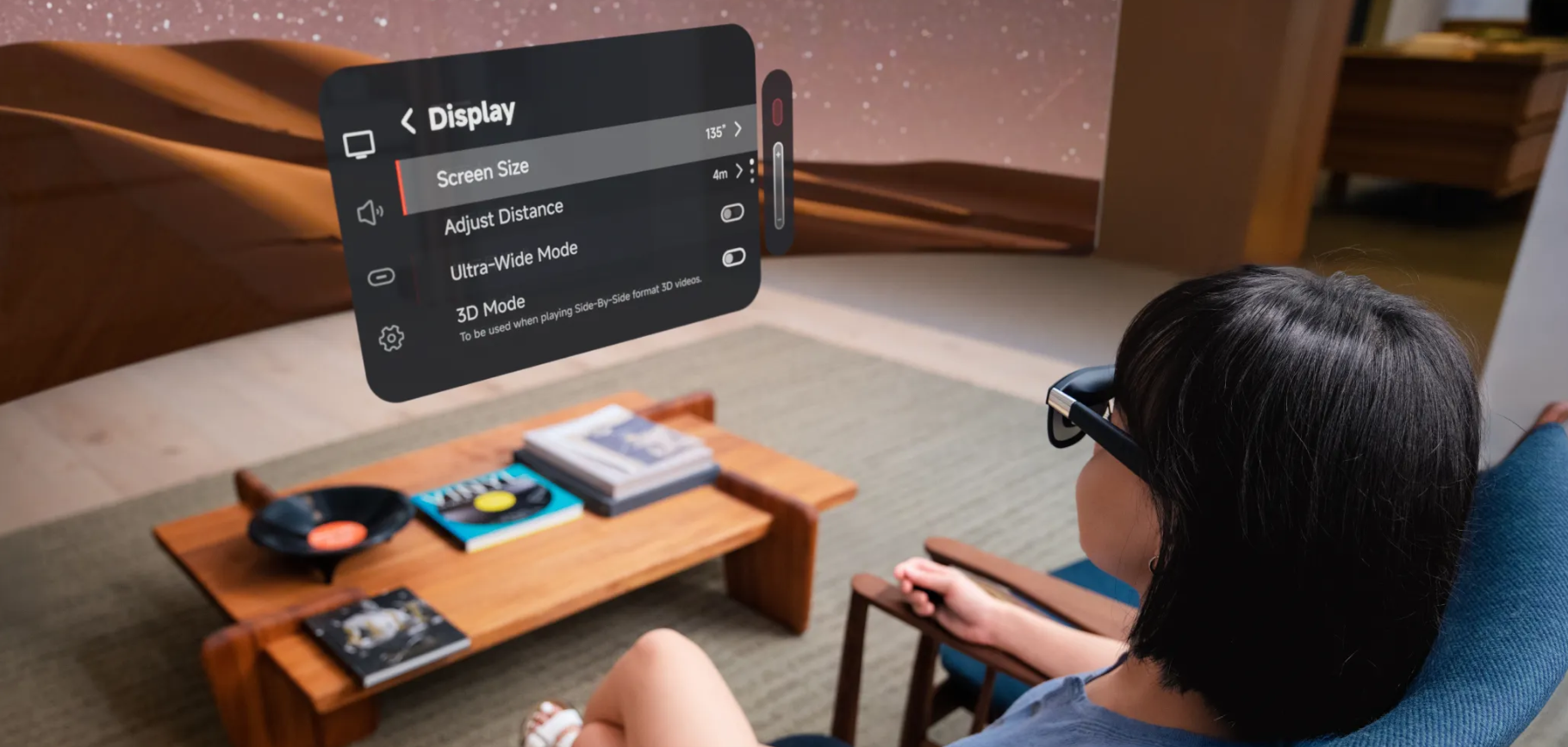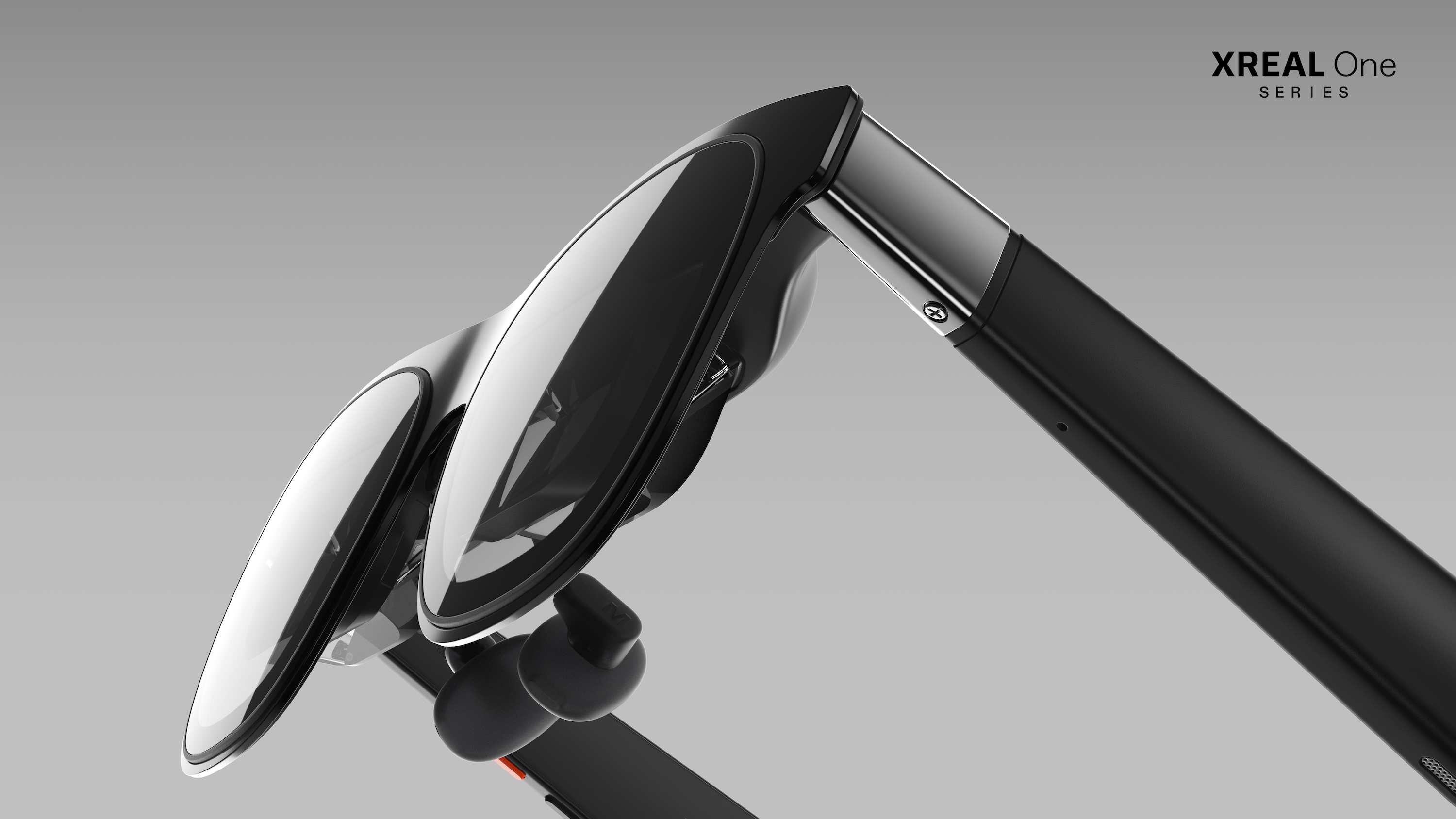XREAL One Pro AR reviews: What the critics love — and don't love — about them
The XREAL One Pro could be the new king of AR glasses

XREAL just launched its latest pair of smart glasses, the XREAL One Pro, which might just be the new best-in-class way to experience AR.
XREAL impressed us in the past with its Editor's Choice Air 2 glasses, but the One Pro could be even better thanks to a slew of exciting upgrades. The One Pro may also give us some hints at what to expect in XREAL's upcoming collaboration with Google on a mysterious pair of mixed reality glasses called "Project Aura."
If you've got your eye (or... eyes) on the One Pro glasses but you're still on the fence, we've got you covered.
We'll be sharing our detailed analysis of the XREAL One Pro in our full review soon, but in the meantime, here's a look at what's being said so far, including a couple of drawbacks you should keep in mind before buying.
XREAL One Pro's improved Field of View is a huge upgrade
A significantly improved field of view (FOV) is arguably the biggest win for the XREAL One Pro. All of the reviews seem to agree on this, too. XREAL increased the FOV on the One Pro to 57 degrees, over 10 degrees more than the Air 2.
PCMag's Will Greenwald highlighted this upgrade in his review, stating, "The XReal One Pro is one of the most advanced pairs of AR smart glasses available, with a record-breaking field of view for the biggest picture you can get in this category."

Greenwald also pointed out that the One Pro has a significantly wider FOV than competitor Viture's Pro XR glasses.
Sign up to receive The Snapshot, a free special dispatch from Laptop Mag, in your inbox.
Laptop Mag rated the Viture Pro XR slightly higher than the XREAL Air 2, but it seems like XREAL's latest pair of glasses has at least one significant edge over Viture's offerings.
That wider field of view means you can see a larger virtual display on the XREAL One Pro compared to other AR glasses (or, alternatively, view more small displays side-by-side).
XREAL One Pro's lightweight design holds some impressive new optical tech
The XREAL One Pro has more advanced tech inside, so it might come as a surprise that it's just as thin and light (if not more so) than previous models. The design still looks like basic black sunglasses, so you might not notice the difference compared to older XREAL glasses at first, but if you look a little closer, there's some impressive new tech inside.
TechRadar's Hamish Hector pointed out the new optical tech XREAL worked into this design, explaining, "The Xreal One Pro glasses have a new shape of lens which is flatter and thinner, rather than being chunky and more triangular in shape.
This means the resulting image is disrupted by fewer reflections caused by light from the world around you, and it’s able to boast a wider field of view to boot."
Brandon Hill of Tom's Hardware touched on this in his review, as well, saying, "Not only does the flat-prism design reduce the visual heft of the glasses, but it also boosts the total field of view from 50 degrees on the One to 57 degrees on the One Pro."
XREAL Eye performance is hit or miss
While it isn't technically part of the XREAL One Pro base unit, the new XREAL Eye accessory is pitched as the perfect companion to the new glasses, adding a 12MP camera you can use to capture photos and videos.
This gives the One Pro a highly coveted feature that fans of the Ray-Ban Meta smart glasses might miss if they make the switch to XREAL. Unfortunately, reviews so far have revealed that performance with the XREAL Eye has its ups and downs.
Brandon Hill of Tom's Hardware summed it up well, stating, "I didn’t find the photos or video to be particularly impressive from the Eye. In low-light conditions, photos looked drab and dark." He also added that, "Videos also looked fuzzy, more akin to something from an iPhone 4 than something more modern."

Aside from camera quality, the practicality of the XREAL Eye isn't ideal, especially if you use the glasses while tethered to a computer. So the potential advantage of taking photos and videos hands-free with the glasses is effectively cancelled out by the need to carry around some tethered device with you.
With that said, the XREAL Eye adds one major new feature that may still make it worthwhile for some people: 6 Degrees of Freedom, or 6DoF.
This feature allows you to geographically "place" your virtual displays like you can on the Apple Vision Pro. That could be useful if you want to use multiple virtual displays at once. However, the XREAL Eye doesn't come cheap at €119 (approximately $136).
The high price is a bit of a letdown on an otherwise great pair of glasses
The XREAL Eye accessory isn't the only thing that's pricey. The XREAL One Pro itself has a pretty steep asking price, which was a drawback for several reviewers.
At $649, the XREAL One Pro is more expensive than some phones and tablets, not to mention the Meta Quest 3 VR headset.
To put that into context, the XREAL Air 2 costs $299, less than half the price of the One Pro. Of course, you're getting better tech for that price, but it still puts the One Pro out of reach for some people.
While reviewers listed the price as a negative, they also acknowledged it delivers on its high price. As PCMag's Will Greenwald put it, "The One Pro is expensive at $650, but its huge field of view and all-around strong performance and feature set justify that price, resulting in a top-notch wearable display experience."
Should you buy the XREAL One Pro?
The XREAL One Pro is a pricey, but feature-packed pair of AR glasses that really shines when it comes to its top-notch field of view.
We'll have our full analysis of these glasses in our upcoming review, but at first glance, they could be a good buy for some people.
The high cost is a significant drawback and may make the XREAL Air 2 a better option for some, but if you can afford it and want the best AR experience around, the XREAL One Pro should be on your shortlist thanks to its cutting-edge optical tech, great visuals, and sleek build.
More from Laptop Mag
- Google and XREAL announce Project Aura, XR smart glasses for Android
- I switched to a smartphone and Xreal glasses — a perfect laptop alternative for travel
- XREAL Air 2 AR glasses review — An augmented reality check

Stevie Bonifield is a freelance tech journalist who has written for PC Gamer, Tom's Guide, and Laptop Mag on everything from gaming to smartwatches. Outside of writing, Stevie loves indie games, TTRPGs, and building way too many custom keyboards.
You must confirm your public display name before commenting
Please logout and then login again, you will then be prompted to enter your display name.
